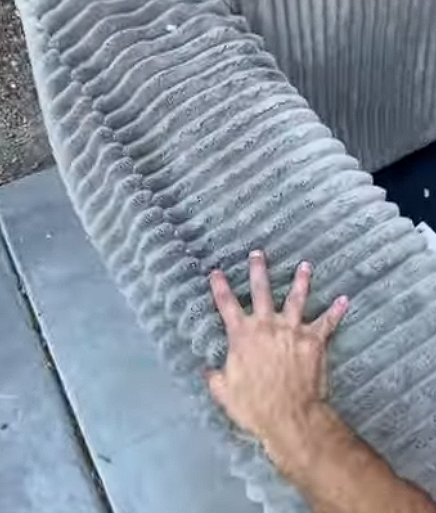Preserving the Beauty of Antique Furniture Through Upholstery Care
The Importance of Upholstery Care for Antique Furniture
Antique furniture holds historical and sentimental value, making it more than just functional décor. Proper upholstery care ensures these pieces maintain their beauty and remain usable for generations.
Upholstered surfaces often show wear over time, especially if neglected or handled improperly.
Taking care of the upholstery helps preserve the unique details and craftsmanship that make antique furniture stand out. Regular maintenance can also prevent small issues from turning into costly repairs.
By keeping the upholstery clean and intact, you protect the overall structure and extend the life of the furniture.
This guide offers practical tips to help you care for antique upholstery without damaging its delicate materials.
These methods are easy to follow and focus on preserving both the appearance and the integrity of your cherished pieces. With the right approach, antique furniture can continue to add charm and character to your space for years to come.
Understanding and Identifying Antique Upholstery Materials
Why Material Knowledge is Key
Knowing the type of material used in antique upholstery is essential for proper care and preservation.
Different fabrics, such as silk, linen, or leather, have unique characteristics that affect how they should be cleaned and maintained. Using the wrong cleaning method can damage delicate materials or cause irreversible discoloration.
Identifying the fabric type helps you choose the right cleaning products and techniques, ensuring the upholstery remains in good condition.
Proper knowledge also helps prevent common mistakes that lead to premature wear or structural issues.
For instance, leather requires moisturizing, while silk demands careful handling to avoid tears. Understanding these details ensures your furniture retains its value and charm over time.
Common Materials in Antique Furniture
Antique furniture often features materials that were popular in specific historical periods.
Silk is commonly found in ornate pieces, while linen was widely used for its durability and natural appeal. Leather upholstery is also frequent in vintage seating due to its classic look and longevity.
Cotton and velvet may also appear, offering soft textures and luxurious finishes. Each material has specific strengths but may weaken over time without the right care.
Familiarizing yourself with these materials helps you understand their maintenance needs and potential vulnerabilities.
Knowing what fabric you’re dealing with makes it easier to avoid damage during cleaning or restoration.
Tips for Material Identification
Identifying upholstery materials can be challenging, especially with aged or worn fabrics. Start by examining the texture, color, and weave of the fabric to gather clues.
A magnifying glass can help reveal finer details like the type of stitching or thread. For leather, look for natural grain patterns that distinguish it from synthetic alternatives. When unsure, consulting a professional is the best way to avoid mistakes.
Upholstery experts can identify materials accurately and recommend the right care methods.
Avoid guessing or experimenting with cleaning products, as this can lead to costly damage. Understanding the material is the first step toward preserving your antique furniture effectively.
How to Clean Antique Upholstery Safely
Routine Dusting
Regular dusting is the first step in maintaining antique upholstery.
Dust can settle into the fabric and cause gradual deterioration if left untreated. Use a soft-bristled brush or a vacuum cleaner with a fabric-safe attachment to remove dust gently.
Avoid using high suction settings, as they can pull at delicate fibers or stitching.
Dusting weekly helps prevent dirt buildup and keeps the upholstery looking fresh.
Be thorough but careful, focusing on seams and crevices where dust often collects. This simple routine protects the material and reduces the need for more intensive cleaning.
Spot Cleaning Tips
Accidents happen, but handling stains on antique upholstery requires extra care. Always test a mild cleaning agent on an inconspicuous area before using it on the stain. Blot the stain gently with a soft cloth, avoiding rubbing, which can spread the stain or damage the fabric.
For delicate materials like silk, consider using distilled water or specially formulated cleaners for antique fabrics.
Act quickly when a stain occurs to prevent it from setting in.
If the stain proves stubborn, seek professional help rather than risking damage with harsher methods. Proper spot cleaning preserves the appearance of your furniture without compromising its integrity.
What to Avoid
Certain cleaning practices can cause significant harm to antique upholstery. Avoid using harsh chemicals, as they can weaken fibers, fade colors, or leave residue behind.
Over-saturating the fabric with water is another common mistake, as excessive moisture can lead to mold growth or fabric shrinkage. Abrasive brushes or scrubbers should also be avoided, as they can tear or fray delicate materials.
Refrain from using steam cleaners unless specifically designed for antique furniture, as heat and moisture may damage older fabrics.
By steering clear of these methods, you can keep your upholstery safe and in good condition for years to come.
Protecting Antique Upholstery from Damage
Sunlight Protection
Exposure to sunlight can fade antique upholstery and weaken its fibers over time. UV rays are particularly harmful to delicate fabrics like silk and cotton, causing discoloration and brittleness.
To protect your furniture, place it away from direct sunlight whenever possible. Use curtains, blinds, or UV-blocking window films to reduce exposure if the furniture is near a window.
Consider rotating pieces periodically to distribute light exposure evenly and prevent uneven fading.
Protective measures like furniture covers can also shield upholstery from harmful light. Preserving the original color and texture of antique fabrics is essential to maintain their beauty and value.
Humidity and Temperature Control
Maintaining the right environment is critical for preventing damage to antique upholstery. High humidity can lead to mold growth, while low humidity can dry out and weaken fabrics.
Ideally, keep the room’s humidity level between 40% and 60% to protect your furniture. Avoid placing pieces near heat sources like radiators or air vents, as sudden temperature changes can cause warping or fabric deterioration.
Use a dehumidifier in damp climates and a humidifier in dry ones to create a stable environment.
Monitoring and controlling the storage conditions ensures your upholstery remains free of moisture damage and retains its structural integrity.
Avoiding Physical Wear
Daily use can take a toll on antique upholstery, especially in high-contact areas like armrests and seat cushions. To minimize wear, consider using removable armrest covers or decorative throws that match the furniture’s style.
These accessories provide a layer of protection without compromising aesthetics. Encourage gentle use of the furniture, avoiding rough handling or excessive weight on fragile sections.
Rotating cushions or pillows can help distribute wear evenly across the upholstery. Taking these precautions ensures your antique furniture stays in good condition, reducing the need for costly repairs.
With proper care, your upholstery will continue to look beautiful and function well over time.
Repairing and Restoring Antique Upholstery
When to DIY
Simple repairs can often be done at home to extend the life of your antique upholstery. Small issues like loose threads, minor tears, or fabric snags can usually be fixed with basic sewing tools.
If the damage is localized and the fabric isn’t too delicate, you can carefully stitch up small rips or reinforce loose seams. For upholstery that is not too fragile, a fabric glue or patch can help hold things in place temporarily.
However, always test any adhesive on an inconspicuous area before use.
DIY repairs allow you to address minor problems quickly and cost-effectively without compromising the integrity of the furniture.
When to Call a Professional
While some repairs can be handled at home, more significant damage requires the expertise of a professional. If you notice structural damage, such as broken frame pieces or sagging springs, a professional upholsterer should handle the restoration.
Major tears or fabric replacement also demand an experienced touch to ensure the integrity of the furniture is maintained. Professionals can match the original fabric or recommend suitable replacements while preserving the antique’s aesthetic.
Attempting large repairs on your own may lead to further damage or reduce the value of the piece. When in doubt, it’s best to call an expert who can restore your antique furniture to its original beauty.
Preserving Original Elements
When restoring antique upholstery, it’s important to maintain as many of the original elements as possible. Original fabrics, stitching, and padding contribute to the furniture’s historical value.
If the fabric is still in decent condition, consider cleaning and reinforcing it rather than replacing it entirely. Even if restoration requires some new materials, try to preserve the look and feel of the original design.
By keeping these elements intact, you maintain the unique charm and authenticity of the piece.
Preserving the original upholstery helps retain the furniture’s historical value and ensures it can be enjoyed for many more years.
Long-Term Maintenance Tips for Antique Upholstery
Routine Inspection
Regularly inspecting your antique upholstery helps catch any issues early before they become major problems.
Look for signs of wear such as fraying fabric, loose threads, or fading colors. Check for pest damage, like holes or droppings, which can be a sign of an infestation.
Inspect the furniture’s structure, including the frame and springs, to ensure there are no loose or broken parts.
The sooner you identify a problem, the easier and less expensive it will be to fix. Routine inspections also help you stay ahead of potential damage caused by everyday use.
Keeping an eye on your furniture’s condition ensures it remains in great shape for years.
Storage Tips
When not in use, proper storage is essential for maintaining the condition of antique furniture. Store pieces in a cool, dry place, away from direct sunlight and humidity, to prevent fabric damage or mold growth.
Avoid placing furniture in attics or basements where temperature fluctuations can cause deterioration. Consider using furniture covers to protect against dust and dirt, but ensure they are breathable to avoid trapping moisture.
If you need to store upholstered pieces for an extended period, avoid compressing cushions or forcing furniture into tight spaces.
Proper storage not only protects the fabric but also preserves the furniture’s overall structure.
Scheduling Professional Cleanings
Periodic professional cleanings are crucial for maintaining the appearance and longevity of antique upholstery.
Experts can safely clean delicate fabrics, remove deep-set stains, and treat upholstery with specialized products that protect against wear.
Professionals also have the knowledge and tools to address issues that might not be visible to the untrained eye.
Scheduling cleanings every 1-2 years helps prevent buildup of dirt and grime that can damage fibers over time. Regular care by a professional ensures your furniture stays in top condition, preserving its beauty and extending its lifespan.
Caring for Antique Upholstery with Pride
Regular Attention and Mindful Practices
Caring for antique furniture requires consistent attention and thoughtful care. Regular cleaning, inspections, and proper storage help protect the integrity of the upholstery while preserving its beauty.
By implementing the right practices, such as gentle dusting and avoiding harsh chemicals, you ensure the longevity of your valuable pieces. Maintaining antique upholstery is not a one-time effort, but an ongoing process that keeps your furniture in top condition.
Small, mindful actions can make a big difference in preventing damage and keeping your antique pieces looking their best.
Preserving History and Beauty
Every antique piece carries a piece of history, and preserving that history is something to take pride in.
The effort you put into maintaining the upholstery ensures that the beauty and craftsmanship of these furniture pieces are enjoyed for generations.
By caring for antique upholstery, you not only protect your investment but also honor the tradition and artistry behind the furniture. Antique furniture can remain a centerpiece in your home for years, showcasing the care and respect you’ve given it.
Next Steps for Caring for Your Antique Upholstery
If you’re unsure about how to care for your antique upholstery, don’t hesitate to consult an expert. Professional upholsterers and restorers can provide valuable guidance on maintaining your pieces properly.
For more tips on upholstery care, feel free to explore additional resources or reach out to a specialist.
Taking the next step in preserving your antique furniture ensures it continues to add beauty and history to your home.


























